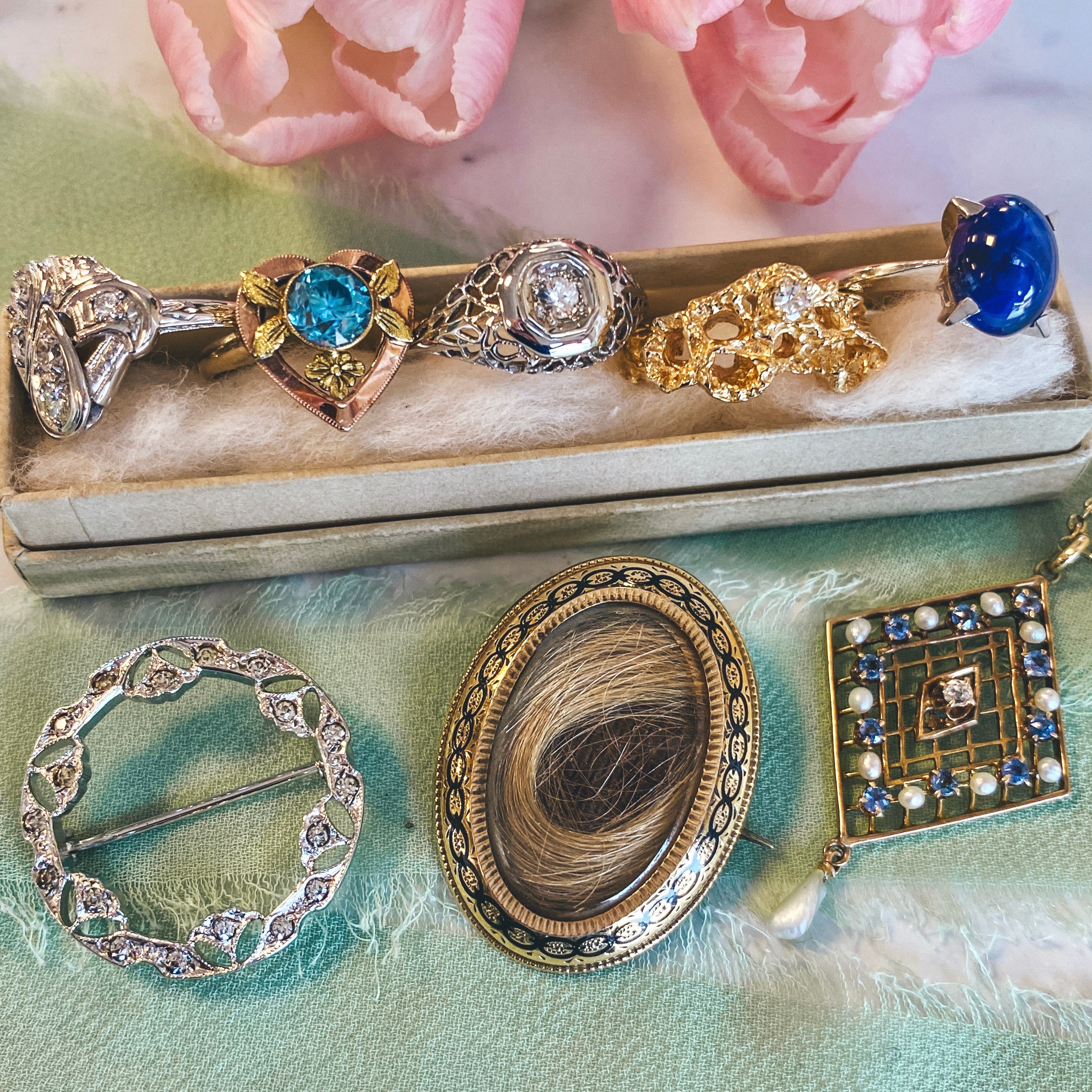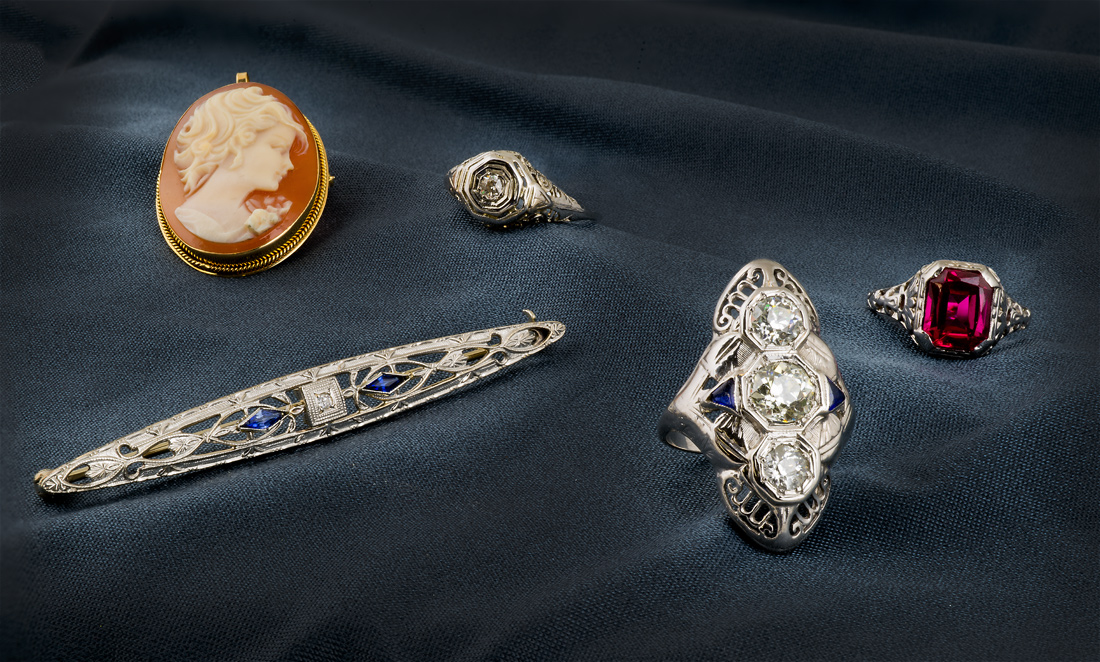Estate Jewelry Buyers Near Me: Tips for Finding Reputable Buyers in Your Area
Estate Jewelry Buyers Near Me: Tips for Finding Reputable Buyers in Your Area
Blog Article
Reveal the Rich Background Behind Stunning Estate Fashion Jewelry Collections
The expedition of estate jewelry collections offers a special home window into history, revealing the detailed connection between workmanship and social development. What keys might these collections still hold?
The Origins of Estate Precious Jewelry
How did estate jewelry concerned personify the abundant history and creativity of lost periods? The origins of estate precious jewelry can be mapped back to various periods of workmanship, where fashion jewelry was not just an accessory but a reflection of social worths, technological developments, and imaginative expressions. Each piece narrates, commonly associated with the lives of their previous owners, enveloping individual narratives alongside historical contexts.
The term "estate jewelry" usually describes previously owned pieces, typically from considerable eras such as Victorian, Art Nouveau, or Art Deco. These pieces were developed with thorough interest to information, showcasing the ability of artisans who utilized products like gold, silver, and valuable gems. Unlike contemporary fashion jewelry, estate items usually include unique layouts that highlight the aesthetic appeals of their time, thus functioning as substantial links to the past.

Notable Style Eras
Throughout history, numerous significant design periods have actually significantly influenced the advancement of estate precious jewelry, each defined by distinctive designs, materials, and cultural contexts. The Georgian age (1714-1837) noted the beginning of detailed styles, typically including nature-inspired themes and the usage of products like gold, silver, and gemstones set in intricate setups. Following this, the Victorian period (1837-1901) introduced enchanting motifs, with sentimental fashion jewelry and innovative strategies such as making use of enamel and cameos.
The Art Nouveau duration (1890-1910) celebrated natural forms and the charm of nature, making use of products like opals and pearls in flowing layouts. This was been successful by the Art Deco age (1920-1939), which welcomed geometric patterns, vibrant colors, and extravagant materials such as platinum and diamonds, reflecting the modernist spirit of the moment.
The Mid-Century Modern age (1940-1960) showcased structured styles and the usage of unconventional products, emphasizing minimalism and capability. Each of these ages not just reflects the artistic motions of their time however also encapsulates the societal worths and technical advancements that formed jewelry layout, making them an interesting topic for historians and collectors alike.

Famous Estate Jewelry Collections
The abundant background of estate jewelry is wonderfully exemplified by several distinguished collections that showcase the virtuosity and craftsmanship from various style periods. Among one of the most popular is the Cartier Collection, which shows the luxury and technology of the legendary French jewelry expert. Parts from this collection typically include splendid gems and detailed designs, highlighting the brand's commitment to great workmanship.
An additional significant collection is the Duchess of Windsor's fashion jewelry collection, which comprises numerous distinctive pieces, including the iconic "Windsor" arm band. This collection not just exemplifies the beauty of the Art Deco duration yet likewise brings an abundant narrative of love and loss, as it came from Wallis Simpson, that famously married Edward VIII.
The collection of the late actress Elizabeth Taylor also stands out in the world of estate jewelry. With many pieces developed by renowned jewelry experts like Bulgari and Cartier, her collection embodies prestige and elegance, emphasizing her personal style and fondness for unique gems.
These renowned estate jewelry collections offer he has a good point as a testament to the long-lasting appeal of great precious jewelry, offering understanding into the cultural and imaginative movements that formed their development.
The Social Significance
Estate jewelry collections hold profound social significance, reflecting not only the visual worths of their particular eras however also the historical and social contexts in which they were created. Each piece often symbolizes the craftsmanship and imaginative trends of its time, showcasing the evolution of layout and technology in precious jewelry production.
Additionally, these collections function as tangible links to cultural practices and routines. For instance, wedding bands and treasure breastpins might represent love and domestic bonds, while pieces adorned with specific gemstones can represent social or local identifications. The materials made use of-- whether gold, silver, or gemstones-- usually tell tales of profession, expedition, and the wealth build-up of cultures.
Furthermore, estate jewelry can function as historic artefacts, providing understandings right into the lives of people and the societal standards they browsed. The way fashion jewelry was worn and valued can disclose much regarding gender duties, condition, and personal expression within differing cultural landscapes. Estate precious jewelry goes beyond mere embellishment, acting as an abundant narrative of human experience, creativity, and social heritage, inviting contemporary target markets to engage with the past in a purposeful method.
Caring for Your Estate Parts
Taking care of estate jewelry items calls for a thoughtful strategy to guarantee their long life and maintain their unique qualities. To maintain the elegance of these treasures, it is necessary to handle them with treatment. Always clean estate fashion jewelry making use of a soft, lint-free cloth after each wear to remove oils and dust. For much deeper cleaning, use a mild soap service and a soft brush, making sure to prevent harsh chemicals that may damage delicate products.
Storage is equally vital; store pieces separately in a fabric-lined box to avoid tangling and scratching. Take into consideration utilizing anti-tarnish pouches or towels for silver things, as this assists to decrease the tarnishing procedure. In addition, prevent exposing precious jewelry to excessive wetness, severe temperature levels, or straight sunshine, which can adversely influence steels and gems.
Consulting a jeweler experienced in vintage or antique items can offer specialized treatment options. By executing these methods, enthusiasts can protect their estate precious jewelry's visual and historical worth, making sure these items continue to be valued for generations to come.
Conclusion
In conclusion, the expedition of estate jewelry collections exposes a tapestry of artistic expression and social significance, mirroring the worths and looks of numerous historic periods. When visit this page had them, each piece offers as a testimony to extraordinary workmanship and the stories of those who. Recognizing the beginnings, design eras, and notable collections enhances appreciation for these artifacts, highlighting their function in preserving social heritage and motivating continued stewardship helpful resources and look after these impressive prizes.
The exploration of estate fashion jewelry collections uses an one-of-a-kind window into background, revealing the complex connection in between workmanship and social advancement. The origins of estate fashion jewelry can be mapped back to numerous periods of craftsmanship, where fashion jewelry was not just an accessory yet a representation of societal worths, technical advancements, and creative expressions.The term "estate jewelry" typically refers to previously owned items, usually from significant eras such as Victorian, Art Nouveau, or Art Deco.The abundant history of estate fashion jewelry is beautifully exemplified by several distinguished collections that showcase the creativity and workmanship from numerous design eras.In verdict, the expedition of estate jewelry collections discloses a tapestry of imaginative expression and cultural relevance, mirroring the values and aesthetics of various historical periods.
Report this page